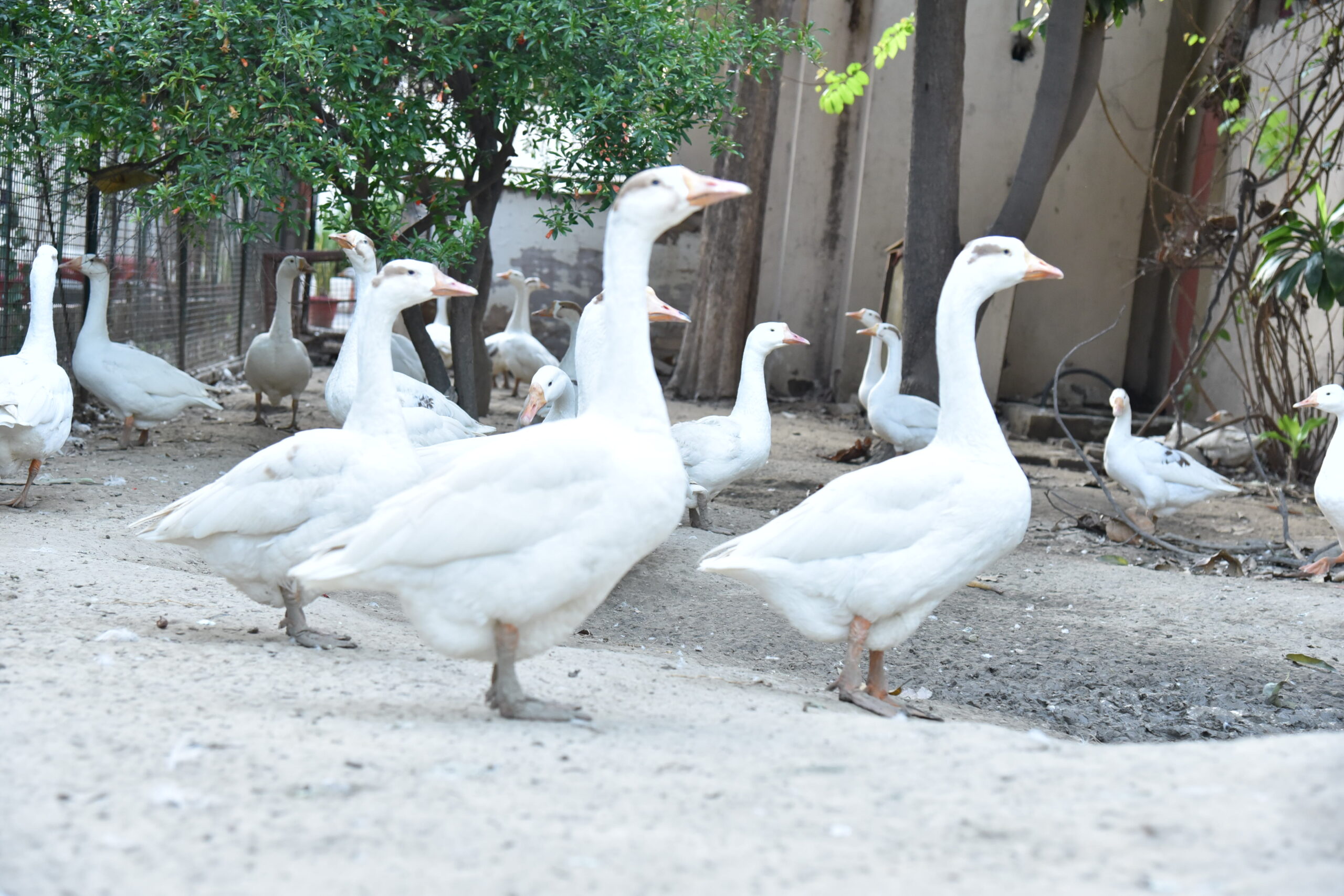The IIMT University campus is home to a variety of wildlife, including a group of White Geese Birds. These stunning creatures are fascinating to observe, and studying them can provide valuable insights into their behavior as well as their importance in the ecosystem. This blog will explore the White Geese Birds of IIMT University’s campus, their habitat, physical characteristics, behavior, and feeding habits. It will also discuss the significance of White Geese Birds in the ecosystem and ways to promote coexistence between humans and White Geese Birds.
✦ Habitat of White Geese Birds
White Geese Birds prefer wetland areas such as marshes, ponds, and lakes. They can be found in both rural and urban areas, making them a common sight in parks, campuses, and even golf courses.
✦ Physical Characteristics of White Geese Birds
White Geese Birds are medium-sized birds with a wingspan of up to six feet. They are primarily white with black-tipped wings, orange beaks, and orange legs. Their feathers have a unique texture that provides insulation against the cold.
✦ Behavior of White Geese Birds
White Geese Birds are social birds and are usually found in the groups of 20 to 30 birds. They are known for their honking calls, which they use to communicate with each other. They are also known for their elaborate courtship displays, where males will bow their heads and fan their tails to attract the females.
✦ Feeding Habits of White Geese Birds
White Geese Birds are herbivores and primarily feed on grass, weeds, and aquatic plants. They are also known to eat grains, such as wheat and corn.
A. The Significance of White Geese Birds in the Ecosystem
✦ Role of White Geese Birds in the ecosystem
White Geese Birds play an important role in our ecosystem. They help control plant growth by feeding on weeds and grass, and their waste acts as a natural fertilizer for plants.
White Geese Birds also have ecological benefits. They help distribute plant seeds, which aids in the growth and diversity of plant life. They are also an important food source for predators such as foxes, coyotes, and eagles.
- Conservation efforts for White Geese Birds
White Geese Birds are protected under the Migratory Bird Act, which makes it illegal to harm or kill them. However, habitat destruction, pollution, and human disturbance still pose threats to their survival. Conservation efforts, such as preserving wetland habitats and promoting coexistence between humans and White Geese Birds, can help protect their populations.
- Observing the White Geese Birds
- Best Time and Place to Observe White Geese Birds
The best time to observe White Geese Birds is during their migration period, which typically occurs in the spring and fall. The IIMT University campus is a great place to observe them, as they are often seen near the campus pond.
- Tips for Observing White Geese Birds
When observing White Geese Birds, it is important to maintain a safe distance and not disturb their natural behavior. Binoculars or a camera with a zoom lens can be used to get a closer look. It is also important to be quiet and still, as sudden movements or loud noises can startle them.
- Precautions to be Taken while Observing White Geese Birds
While observing White Geese Birds, it is important to be mindful of their waste, which can carry bacteria and parasites. It is recommended to wash hands thoroughly after observing them and avoid touching or handling them.
- The White Geese Birds and the Human Society
- Symbolism of White Geese Birds in the Human Society
White Geese Birds hold symbolic significance in many cultures. In Native American folklore, they represent balance, harmony, and community. In Chinese culture, they symbolize marital fidelity and family togetherness.
- Human Impact on the White Geese Birds
Human activity, such as habitat destruction and pollution, can have negative impacts on White Geese Birds. They are also often subjected to feeding by humans, which can cause them to become dependent on the human-provided food and lose their ability to forage in the wild.
- Ways to Promote Co-existence between the Humans and the White Geese Birds
To promote co-existence between humans and White Geese Birds, it is important to avoid feeding them and to respect their natural behaviour. Wetland habitat preservation and restoration can also help support their populations and provide a safe and healthy environment for them.
- Conclusion
The White Geese Birds of IIMT University are a fascinating and important part of the campus’ ecosystem. By observing and studying them, we can gain valuable insights into their behaviour and significance in the ecosystem. Conservation efforts and promoting co-existence between humans and White Geese Birds can help protect their populations and ensure their continued presence on the IIMT University campus.
- FAQs
- Are White Geese Birds native to India?
No, White Geese Birds are not native to India. They are a migratory bird species that can be found in the various parts of the world.
- Can I feed White Geese Birds on the IIMT University campus?
No, it is not recommended to feed White Geese Birds on the IIMT University campus as it can cause them to become dependent on human-provided food and lose their ability to forage in the wild.
- Are White Geese Birds protected under the law?
Yes, White Geese Birds are protected under the Migratory Bird / Wildlife (Protection Act 1972) Act, which makes it illegal to harm or kill them.
- What is the significance of wetland habitats for White Geese Birds?
Wetland habitats provide important resources for White Geese Birds, such as food, shelter, and nesting sites. They also play a crucial role in the ecosystem and support a diverse range of wildlife.
- Can White Geese Birds be aggressive towards humans?
White Geese Birds can become aggressive if they feel threatened or their natural behaviour is disrupted. It is important to maintain a safe distance and avoid disturbing them.

